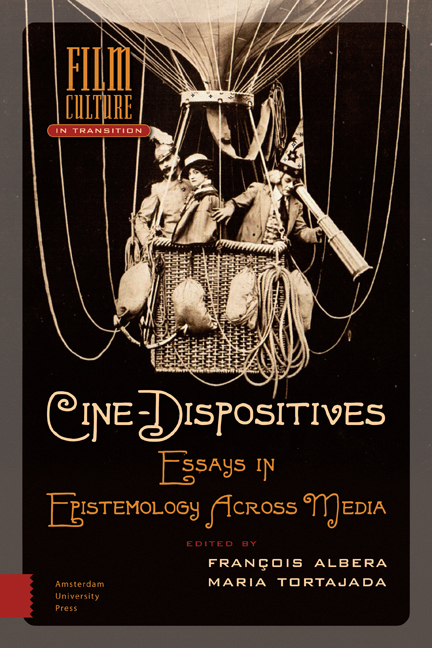The Social Imaginary of Telephony: Fictional Dispositives in Albert Robida’s Le Vingtième Siècle and the Archeology of “Talking Cinema”
Published online by Cambridge University Press: 10 February 2021
Summary
What I propose to do here, within a perspective involving both epistemology and the archaeology of media, is to approach “talking cinema” through the examination of discourses produced in the last two decades of the nineteenth century, that is, almost fifty years prior to the generalization of talkies and the institutionalization of practices related to sound in the domain of cinema. Beyond this specific medium, I will examine the series of machines of audiovisual representation, one of whose many actualizations was “talking cinema” (which is why quotation marks are fitting here, with regard to “cinema” as well as “talking”). Among the many inventions from which various experimentations with “talking cinema” may be said to derive, I will emphasize the technique of telephony. Indeed, its study presents the advantage of encompassing a number of auditive or audiovisual dispositives that are often much more difficult to reduce to their place in the genealogy of (institutionalized) cinema than viewing dispositives. On a methodological level, de-centering the point of view is precisely what appears productive to me, as the discussion of the place given to the voice within various audio(visual) dispositives constitutes the theoretical horizon of my observations.
It seems rather improbable that the telephone, considered today as belonging in the sphere of telecommunications, and whose invention is usually credited to Alexander Graham Bell (who registered a patent for it in February 18764), would cross paths with the series of moving images, even when these come with recorded sounds. Some differences touching on the relations established between representation and addressee of the vocal (or audiovisual) message would at the very least cast doubts on the possibility. These differences may be spelled out thanks to the following, necessarily basic classification, whose oppositional pairs should not be seen as hermetically separate, at least if the hybridity of phenomena tied to the emergence and constitution of the media in question is to be taken into account:
When considering these different features and the traditional and monolithic conception of the two media they assume, the unidirectional communication with a collective audience (projection) implied in the film show proves very different from the dominant use of the telephone, which consists in an interactive communication carried out by a user in a private space.
- Type
- Chapter
- Information
- Cine-DispositivesEssays in Epistemology Across Media, pp. 217 - 248Publisher: Amsterdam University PressPrint publication year: 2015
- 3
- Cited by

